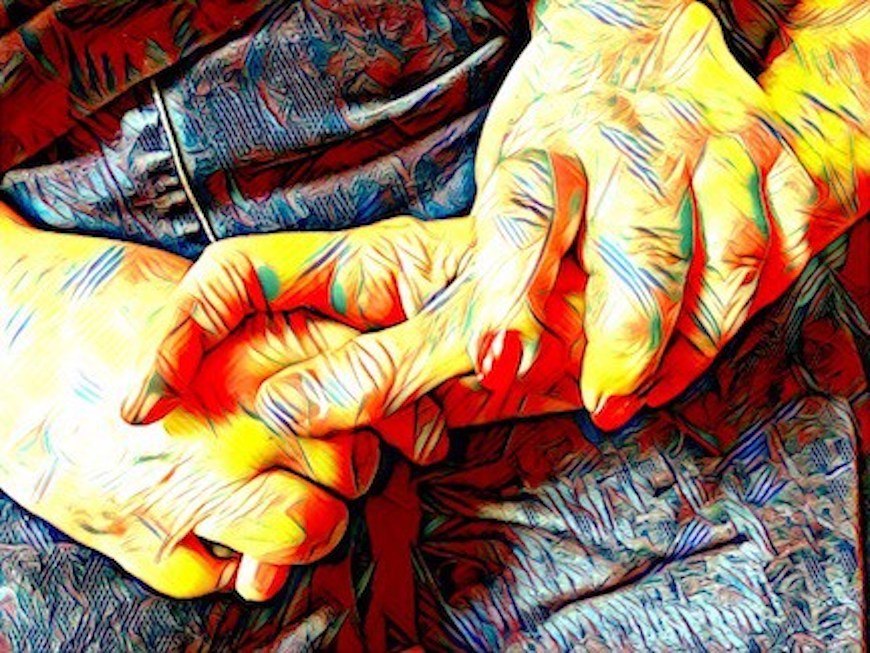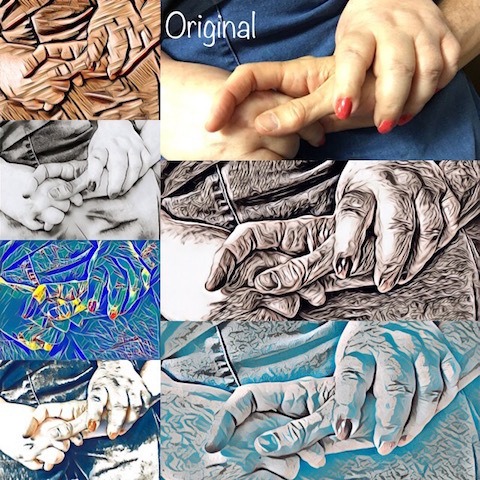Leave a Comment:
(1) comment
Beautiful Tim! Love this story of the many conversions of your dear Mom, and that beautiful conversation the two of you shared.
Reply
I like to contemplate the holiness present in the patience of God’s people: in those parents who raise their children with immense love, in those men and women who work hard to support their families, in the sick, in elderly religious who never lose their smile.
ON THE CALL TO HOLINESS IN TODAY’S WORLD
http://w2.vatican.va/content/francesco/en/apost_exhortations/documents/papa-francesco_esortazione-ap_20180319_gaudete-et-exsultate.html
One quiet evening in 1978, my mother and I were discussing various topics in the life of the church. She was a hard-won convert when she married my dad at the end of the Second World War. After struggling with various doctrines and traditions, especially anything to do with Mary, she finally integrated the teachings of the Catholic Church into her faith as a Methodist.
It was not surprising, then, that she had some difficulties with some of the changes stemming from the Second Vatican Council. She worked hard at accepting Catholicism, and now it seemed that the Church was betraying her efforts.
One of the changes she could not accept was the reception of the Eucharistic Bread in her hands. There was ‘no way she was worthy enough’ to touch Jesus.
Our conversation turned to “whose hands are worthy enough to touch Jesus?” She was convinced that it was because the priest’s hands were anointed at ordination that made it okay for them to touch the hosts, as well as to do blessings and other sacramental acts.
 This conversation took place shortly after my dad passed away at the end of a tough struggle with cancer. Certainly I agreed that priests’ hands are holy. And so are hers. I reminded her of my dad’s final days in the hospital when she held his hands, caressed his face and mopped his brow as he faded from our family. Wasn’t that holy? Wasn’t that sacramental (small “s”)? And what about those hands that cared for my siblings and me? Didn’t they comfort us when we were sick, and didn’t they do the necessary cleaning after bouts of nausea? What about diaper changing? Wasn’t that an act of holiness?
This conversation took place shortly after my dad passed away at the end of a tough struggle with cancer. Certainly I agreed that priests’ hands are holy. And so are hers. I reminded her of my dad’s final days in the hospital when she held his hands, caressed his face and mopped his brow as he faded from our family. Wasn’t that holy? Wasn’t that sacramental (small “s”)? And what about those hands that cared for my siblings and me? Didn’t they comfort us when we were sick, and didn’t they do the necessary cleaning after bouts of nausea? What about diaper changing? Wasn’t that an act of holiness?
I guess, like our differing images of God, we have different images of holiness.
A few weeks later, my mom admitted to me that she received Communion in her hands. I looked at those hands, gnarled with painful arthritis, and thought about how holy those hands were, and how holy she was to be vulnerable enough to share that her image of holiness changed as she reflected on her holy hands.
A basic principle in media literacy is, “There is nothing in a movie that isn’t deliberately included by the director.” The same can be said about other types of media, including parish and school websites, social media and blogs. The graphic chosen for this post is very stylized, and rather stark. One may immediately react to it and dismiss it (“That’s cool!”, “I don’t like it”, or “It’s an unsettling image.”). But media literacy calls us to ask, “Why was it included?" or "What was the author trying to say?" or "Why was that angle, color, or image chosen?” The hope is that, if a post is shared, readers will also share what they ‘saw’ in it’s graphic. What do you see in these hands? Who do they belong to? How do you feel about the positioning of the hands? What does the color composition say? How does the graphic relate to story? If God is everywhere, all the time, how does the graphic reflect the author's image of God?
There are many apps for photo effects. The one used here is Painnt for Windows, Mac, iOS, Android (http://moonlighting.io/painnt-browse-effects.php). If you tell stories and want a graphic to provide a particular feeling of warmth, creativity, ambiguity, harshness or zest, check out and play with Painnt. Below is this post’s original photo and a random sampling of some of the hundreds of styles. And if you need to search for copyright friendly photos for content, don’t forget to check out Pixabay (https://pixabay.com/) or Unsplash (https://unsplash.com/)


Tim Welch is the Consultant for Educational Technology at Catholic Education Ministries, Diocese of Saint Cloud, MN. With more that 35 years of experience at the parish and diocesan levels, he is continually searching for ways of journeying with others to implement proven technologies that can serve ministry (especially catechesis).
Beautiful Tim! Love this story of the many conversions of your dear Mom, and that beautiful conversation the two of you shared.
Reply